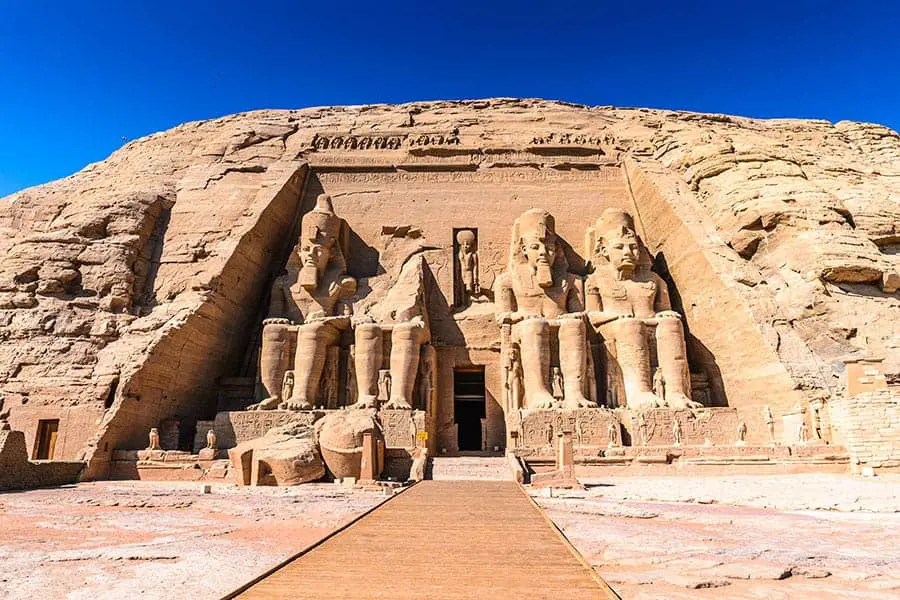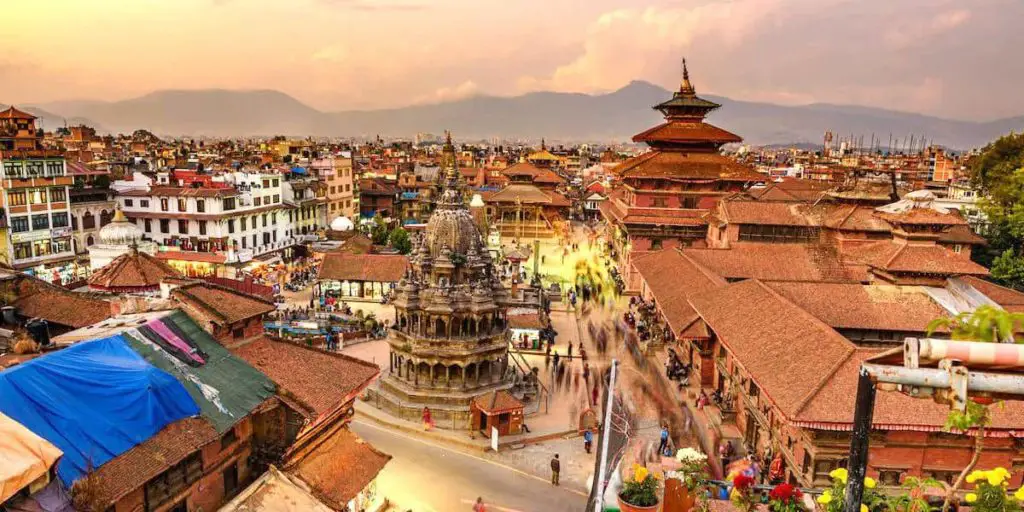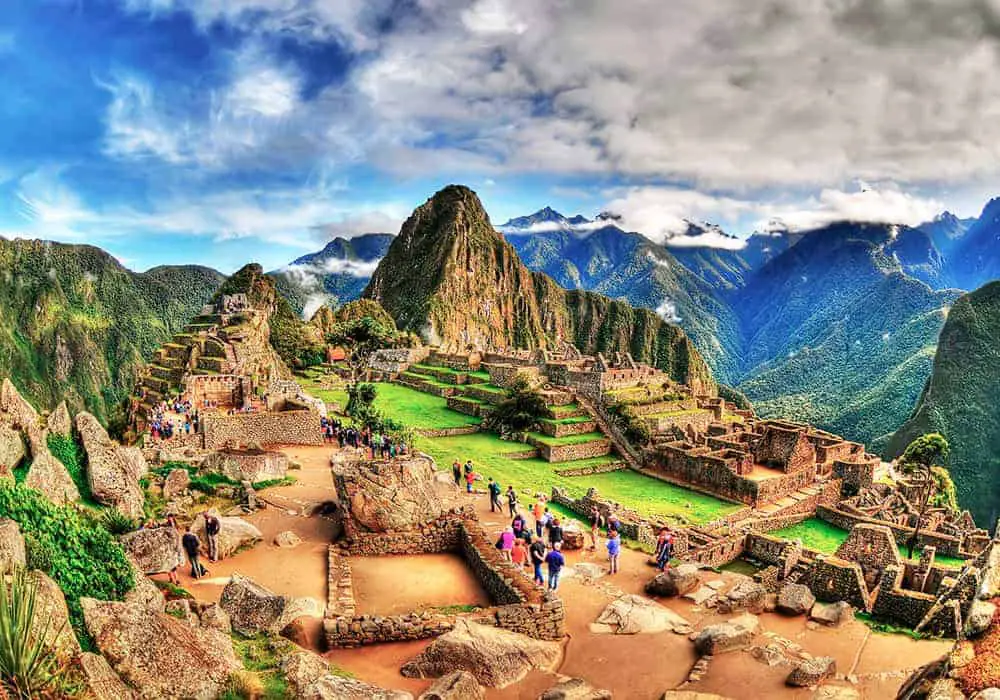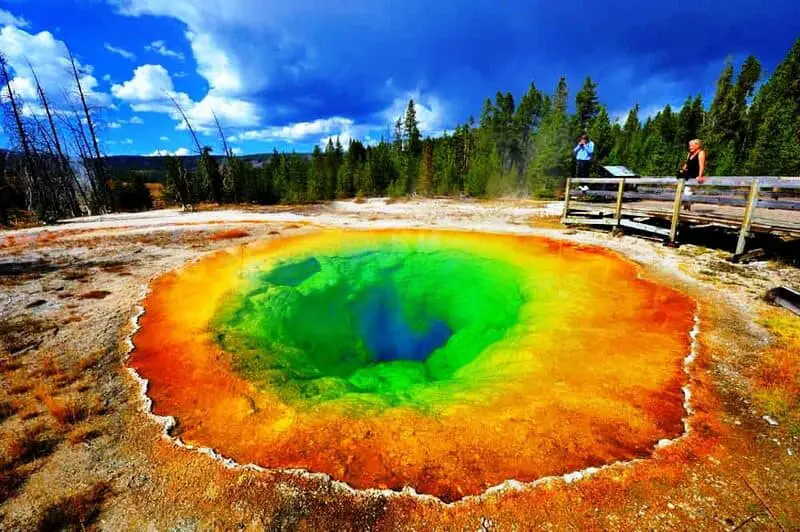From the horrors of the Second World War and to propagate peace, the United Nations Education Science and Culture Organization (UNESCO) emerged.
Some of the most amazing places of ancient times have been lost and isolated from the world for centuries or even thousands, scattered in jungles, deserts and agricultural fields around the globe.
The stories of abandoned towns or the revelations of the ordinary lives of people have contributed to incredible results open to the world.
If you are planning to lush treat to your culturally curious side, we have created a list for top 10 UNESCO world heritage sites:
10. Cesky Krumlov, Czech Republic

Benedictines of Český Krumlov were built to surround one of the best-looking castles in the Czech Republic.
The completed castle which began its construction in 1240 AD has architectural features Renaissance, Gothic, and Baroque overlays.
For over five decades, this medieval city has kept its architectural history and its riverside views, paved streets, and regular cultural events.
This picturesque small village is on the top lists of many visitors on a wider trip across the Czech Republic.
Cesky Krumlov is also home to friendly local people inside the castle, and it is a great place to meet tourists from all over the world.
Why should you visit-
Visiting this city you may feel its architectural history with eastern European culture.
9. The Nubian Monuments, Egypt

If we consider only ancient culture, Egyptian civilization has stood the test of time to this day.
We know it as one of the oldest and best UNESCO world heritage sites by country ever existed.
Abu Simbel is a small town with a magnificent view of the desert lake, with special fame claim to two enormous temples which were saved from the rising water of Lake Nasser.
Now Abu Simbel’s original location is well underneath the water.
Once, however, the Aswan High Dam was completed in the 1960s and this gem would forever be lost in rising water level.
The Temple of Ramses II contains four over 20 meters high Ramses statues, the Temple of Hathor one of the most preserved in Egypt, and each temple is impressive in its own right.
It was not just important for Egypt that they rescued the Nubian temples of Abu Simbel from the rising Nile, but revolutionized the overall approach to heritage conservation.
In 1968, they cut the Ramses II complex into 2,000 parts in around 1260 BC and moved to higher ground–piece by piece.
It is now the headline of a UNESCO site which included other Nubian monuments, including Philae’s shrine of Isis, and a firm conservation symbol.
The United Nations is committed to preserving and protecting the United Nations World Heritage site for future generations, considering this ongoing crisis.
Why should you visit-
A deeper look into ancient Egyptian civilization & symbol it represents.
8. Cape Floral Region, South Africa

In Cape Town, South Africa there is a park called the Table Mountain National Park.
Most visitors find it a beautiful view. Table Mountain National Park, however, encompasses the Cape Peninsula area of 85 sq. m.
Most of the cape is in the UNESCO World Heritage Site in the Cape Floral Protected Areas Region.
More than 20 percent of the whole flora biodiversity of Africa dwells here, despite its small area.
Cape Peninsula to Cape Point is the best way to experience this habitat.
Why should you visit-
Flowers everywhere, closest resemblance to paradise.
7. Hampi

This small town is really a hidden gem in Southern India.
Hampi ruins are protected by the UNESCO because they are thought to give visitors to the temples an insightful experience.
The remains of the final great Hindu kingdom are found in this splendid city.
Temple, entrance gates, forts and more remain over 1,600 pieces, created during the Vijayanagara Empire.
The city has a rocky topography that is ideal for those who love climbing, with a landscape defined by hills, open plains, and the river Tungabhadra.
Why should you visit-
A look into classical ancient Indian architecture and its unique topography.
6. Great Barrier Reef, Australia

One of Australia’s best-known destinations is this incredible view for marine wildlife.
The Great Barrier Reef has a total length of over 2,300 kilometers and 900 islands!
It is Australia’s top marine attraction and is the biggest coral reef system in the world.
The reef extends for over 2,300 kilometers, from Queensland Northern to Bundaberg coastal town, and is one of the most vibrant ecosystems in the world.
It is the only living ecosystem visible from the space that is so large this network of beaches, coasts, coral cays, seagrass beds, and mangroves.
Why should you visit-
SCUBA diving and snorkeling along the shinning coral reefs, sailing around idyllic islands of the tropics, fishing in designated areas, gazing at the plentiful sea life of a glass-bottomed boat and waking over this splendid natural marvel on a scenic flight are some of the most popular things to do.
5. Acropolis, Greece

The Acropolis is a proud monument to ancient Greece that stands over the city of Athens from its highest perch.
Built around 5th to the 4th centuries BC, the Parthenon is the most famous structure and symbol of the history of this country. It dominates the site.
The Acropolis is a powerful sight, bright daytime in the Mediterranean sun and lighted up for dramatic effects in the night just steps away from modern Athens.
The city itself is a breathtaking sight for first-time visitors to other parts of Greece, and it sets the stage for travelers.
Distinguished sculptors and architects eventually designed by architects of these monuments for theater, democracy, philosophy, speech, and freedom of expression.
The Acropolis is one of the top UNESCO world heritage sites in Greece and is highlighted by the Parthenon.
Why should you visit-
It’s perfect for history buffs hoping for a closer look at ancient Greek civilization.
4. Kathmandu valley, Nepal

Central Nepal has several major historical sites that make up a separate UNESCO World Heritage Site list alone in Kathmandu Valley.
Two Buddhist stupas, two Hindu shrines, and three beautiful spots, which are the main cultural locations in Nepal.
One of the two biggest world religions, Hinduism and Buddhism, have the cultural heritages that were built live together, signifying their similarities.
Unfortunately, several sites were severely damaged or destroyed by an earthquake on 25 April 2015, including the Durbar Square in Kathmandu.
Why should you visit-
Ancient Hindu & Buddhist temples with magnificent natural surroundings.
3. Yellowstone National Park, USA

We know the park for its spectacular landscape, diverse flora and fauna and fascinating wonders of geothermal life.
The world’s first national park sits on a hot spot with volcanic views, fun activities, and sightseeing of wildlife.
It’s easy to see why it is one of the biggest parks in the USA, home to lush forests, hot springs, alpine rivers, geysers, and more.
Why should you visit-
Yellowstone has the highest number of active geysers in the world and offers a glimpse into the mighty forces deep under the earth’s crust, the same forces and the vibrant and spectacular landscapes of that area.
The landscapes range from snaking rivers and lush green valleys to canyons, vast lakes, thundering waterfalls, and lunar scenery.
2. Machu Picchu, Peru

Without Machu Picchu, a visit to South America is not complete.
This Inca-built fortress is about 8,000 ft above sea level and is a unique experience to reach.
The natural beauty is unmatched in the Andes and Amazon Basin.
You will find a rich landscape and varied flora and fauna when traveling through the clouds.
Make sure that you have a handy camera to capture old buildings, flashy views, and local llamas camels. ⠀
There’s a good cause: it’s stunning totally. Machu Picchu is a kind of amazing place where visitors can rest and catch the feeling.
Everything you see & hear in Machu Picchu is itself, out-of-the-world experience.
No better than to stand on the Hut and Funerary Rock of the Caretaker and take in the view.
Why should you visit-
You’ll find a rich landscape with a diverse flora and fauna
1. Angkor wot,Cambodia

Angkor Wat in Cambodia is the biggest temple in the world.
This top UNESCO World Heritage Site provides visitors with great insight into the evolution of adventures and how time can change things dramatically.
Angkor City is one of the most significant–and spectacular–archaeological sites in Southeast Asia.
It was the capital of the prosperous Khmer Empire from the 9th to 15th centuries AD.
The area is over 100 sq miles surrounded by lush forests and has an almost endless number of temples and monuments.
At sunrise, visit the famed Angkor Wat, dance along with a pool and then go to the Bayon Temple and look at the sculpted sculptures.
This architectural masterpiece is one of the most visited historic sites in the world and attracts over two million visitors a year.
Why should you visit-
Inside a look into Javan style architecture with beautiful forest around it.
These sites have such an exceptional natural beauty or cultural importance that they are worthy of humanity’s protection.
It might be a cliché to say that there was never a better time to explore the world’s greatest sites.
There is a list of 1,073 locations and a new lot was added each July, thus protecting their posterity.
It’s a beautiful variety, a lush treat for everyone (naturists to historians).
I hope you agree with my research on the top 10 UNESCO world heritage sites, please share it on Social Media with your friends.
